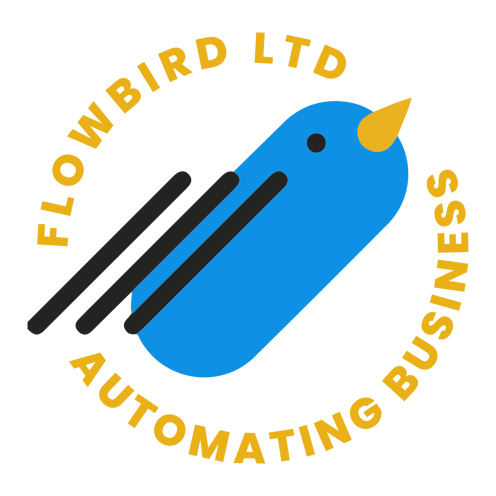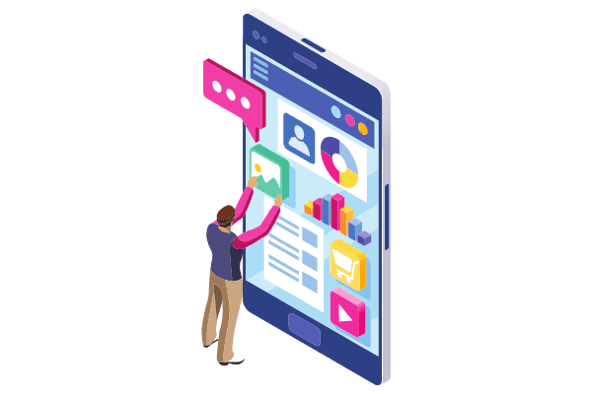
10 Best Lead Generation Tips, Tricks & Ideas
Generating quality leads isn't about chasing numbers. It’s about building meaningful connections with potential customers who are a great fit for your business. In 2025, successful lead generation is less about volume and more about value, trust and timing.
Whether you’re a startup, an established SME or a growing B2B brand, here are 10 of the most effective strategies to generate leads that actually convert without wasting time or budget.
1. Transform Your Website into a Lead Generation Engine
Your website should be your hardest-working salesperson. That means it should do more than look good. It should convert.
Clear CTAs: Use action-driven language on your buttons (“Get your free quote”, “Download our guide”, etc.).
High-intent content: Landing pages, service descriptions, and pricing pages should be optimised to answer key buyer questions.
Lead capture tools: Smart forms, exit-intent popups, and live chat can increase conversions—if used strategically.
—this simple change alone can improve conversion rates by up to 28%.
AI chatbots can engage visitors proactively, answer common queries, and qualify leads in real-time, ensuring no opportunity is missed. Platforms like Social Intents offer ChatGPT-powered bots that integrate seamlessly with CRM systems, providing a scalable solution for lead capture and nurturing

2. Invest in High-Quality Content
Buyers in 2025 are savvy. They do their own research long before speaking to sales—and that’s exactly where content marketing shines.
High-quality, problem-solving content builds trust and drives long-term lead generation. Focus on answering the questions your prospects are already asking. Blog posts that offer in-depth, practical solutions not only engage readers but also boost your search visibility.
Pro tip: Offer lead magnets like downloadable guides, templates or calculators. These valuable resources are perfect for exchanging contact details and growing your email list.
3. Drive Results with Paid Advertising (Done Right)
Paid ads can generate leads fast—if you’re strategic. Use Google Ads to capture high-intent search traffic, and turn to LinkedIn or Meta (Facebook/Instagram) to reach targeted audiences using lookalike or custom segments.
But precision is key. Don’t send ad traffic to your homepage. Instead, build dedicated landing pages that align tightly with each campaign’s messaging and offer. These consistently outperform general pages in terms of conversion.
Optimise relentlessly. A/B test your:
Headlines
Visuals
CTA buttons
Ad copy
Retargeting is also key. Use platforms like Google Ads and Meta to re-engage visitors who interacted with your site but didn’t convert. Build audiences based on user behaviour such as page visits or time on site, and serve tailored ads that speak to their pain points or offer a clear next step.
Done right, paid ads don’t just bring traffic—they deliver qualified leads that are ready to buy.
4. Follow Up (Faster Than Your Competitors)
You’ve done the hard work to capture the lead—don’t let them go cold
Automate follow-up emails: Send instant thank-you messages, next steps, or helpful resources.
5. Launch a Referral or Partnership Programme
Referral leads are highly cost-effective and tend to convert well because they come with built-in trust. A structured programme helps you unlock this potential consistently.
Incentivise referrals: Encourage customers or partners to spread the word with rewards like discounts, exclusive access or gift vouchers.
Partner with like-minded businesses
Collaborate with non-competing brands that serve the same audience to cross-promote and expand your reach.
Simplify the referral process
Use pre-written templates, unique tracking links and clear instructions to make it easy for people to refer.
Promote your programme widely: Share it via email, social media, your website and sales teams to maximise visibility and engagement.
Review and improve regularly: Monitor performance, gather feedback and update rewards to keep the programme relevant and appealing.
6. Use Social Proof to Build Credibility
In an increasingly sceptical digital environment, social proof builds trust and confidence faster than any sales pitch.
Highlight client testimonials and case studies: Place authentic client feedback and real success stories near CTAs to boost credibility where it matters most.
Encourage and promote customer reviews: Ask satisfied clients to leave reviews on independent platforms and repurpose them across your site, social media and email campaigns.
Share success stories across channels: Display Google, Trustpilot or Trustmary reviews along with client logos, star ratings or awards to reinforce reputation.

7. Host Webinars or Online Events
Webinars and virtual events are powerful tools for building trust, showcasing expertise and capturing high-quality leads. Whether live or on-demand, they offer a direct way to engage your audience and provide real value.
Deliver content that solves real problems: Focus on teaching something practical and relevant to your audience, such as industry trends, how-to guides or expert insights.
Use the event to demonstrate your expertise
Position your brand as a trusted advisor by providing actionable advice rather than a sales pitch.
Capture and qualify leads during sign-up
Use the registration form to collect key information like job title, company size or interests to help segment and follow up effectively.
Follow up promptly with attendees
Send a thank-you email, include a replay link and offer next steps like booking a call, downloading a related resource or accessing an exclusive offer.
8. Optimise Everything Through A/B Testing
A/B testing is a simple but powerful way to boost your lead generation. By testing two versions of a landing page, email, or ad (Version A vs Version B), you can quickly learn what works best.
Start small—change just one element at a time:
Try two different headlines
Swap your call-to-action wording
Shorten your form fields
Test button colours or placements
Even minor tweaks can lead to major improvements in conversion rates.
Pro tips:
Only test one variable at a time—so you know what actually caused the difference
Give each test enough time and volume to get statistically reliable results
.png?width=319&height=399&name=AB%20Testing%20(3).png)
9. Offer a Free Tool, Trial, or Assessment
People are more likely to engage when they receive something of value upfront. Free tools, trials or assessments help build trust and attract high-intent leads who are already interested in solving a specific problem.
Offer a free audit or personalised assessment: Give prospects a quick, insightful review of their current setup or strategy. Whether it's an audit, marketing performance review, or website health check, this positions you as the expert while surfacing opportunities for your service.
Let them try before they buy: Short trials of your product or service remove friction and give prospects a chance to experience real value. A 7-day or 14-day trial can be just enough to demonstrate results and build confidence in your solution.
One more item for this Keep it simple to get started: Minimise form fields and make the signup process seamless. The easier it is to access your free offer, the more likely people are to convert.
10. Be Active on LinkedIn
LinkedIn is a powerful platform for building visibility, authority and trust. Your prospects are already there — the key is showing up consistently with valuable content and authentic engagement.
Post regularly with insight-led content: Share thought leadership, practical tips, industry trends or short case studies that highlight results. Keep posts conversational and relevant to your audience’s pain points.
Connect with ideal prospects: Send personalised connection requests to people who match your target profile. Focus on quality over quantity — and always include a reason to connect that feels human.
Engage meaningfully: Comment on posts, join conversations and support others in your network. Real engagement helps you stay visible and positions you as helpful, not pushy.
